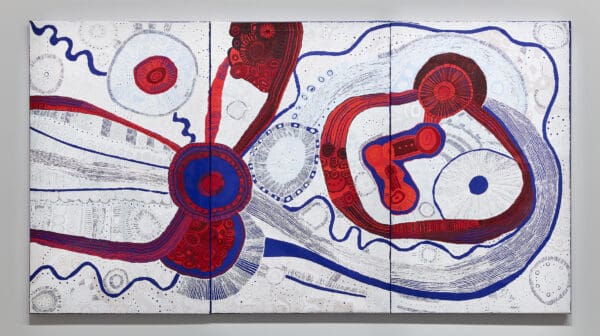
Life Cycles with Betty Kuntiwa Pumani
The paintings of Betty Kuntiwa Pumani form a part of a larger, living archive on Antaṟa, her mother’s Country. More than maps, they speak to ancestral songlines, place and ceremony.
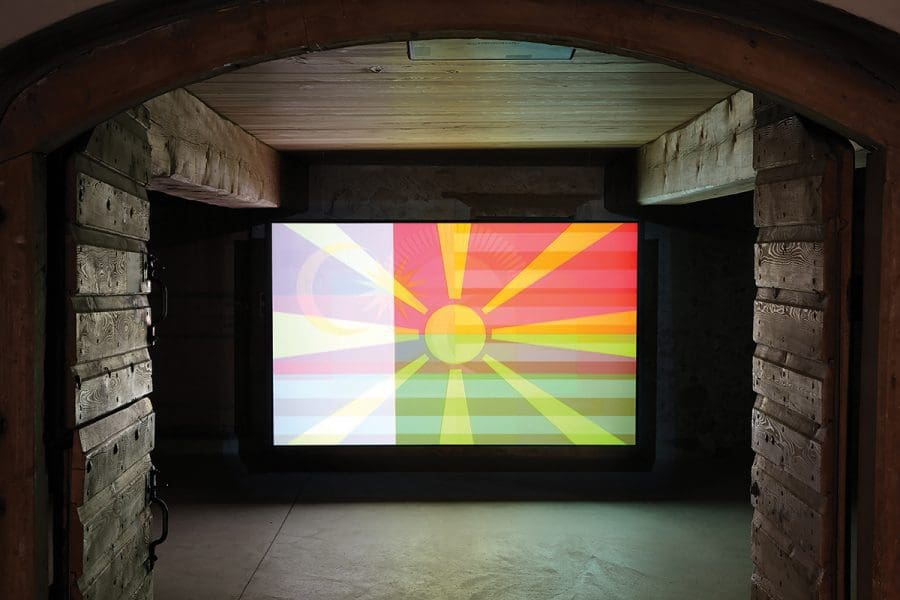
Kimsooja, To Breathe – The Flags, 2012, single channel video animation, silent, 40:41 loop, photograph by Ralph Feiner. Courtesy of Gallery Tschudi, Zuoz, Switzerland, and Kimsooja Studio.
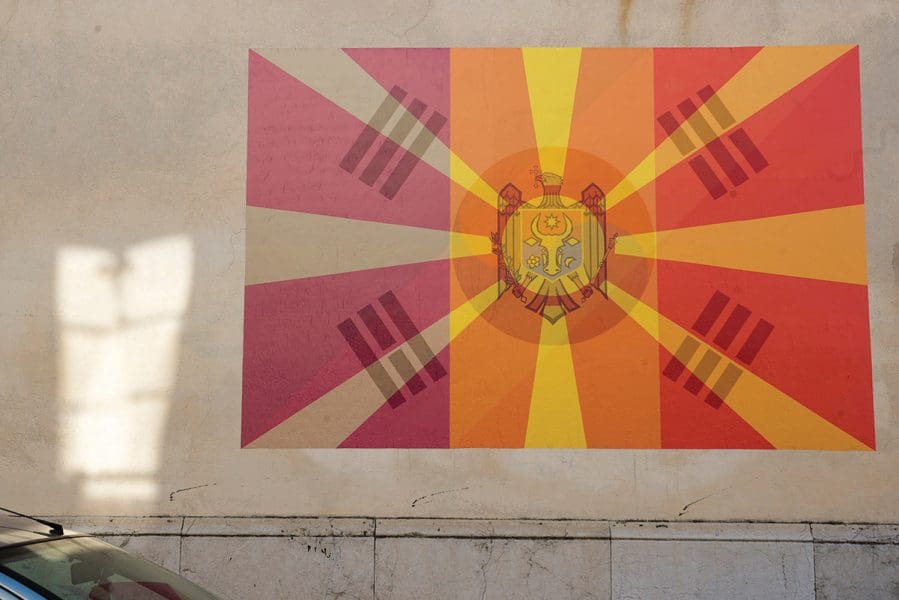
Kimsooja, To Breathe – The Flags, 2012, series of site-specific print installations for the Contemporary Art Trail 2012 Aix-en-Provence, France, dimensions variable. Photograph by Elizabeth Carecchio. Courtesy of Kimsooja Studio.
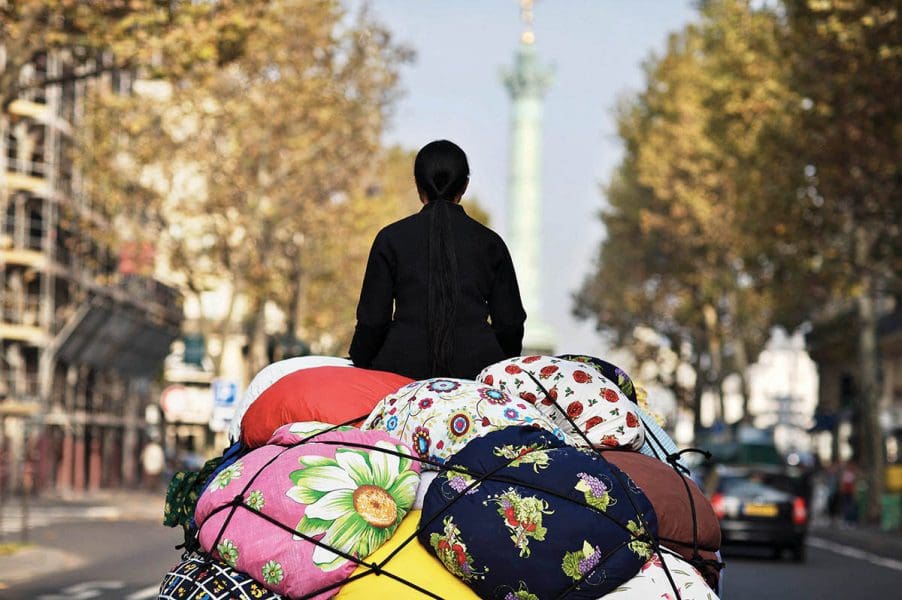
Kimsooja, Bottari Truck – Migrateur, 2007, single channel video projection, silent, 10:00, loop, performed in Paris, commissioned by Musée D’Art Contemporain du Val-De-Marne (MAC/VAL). Still photograph by Thierry Depagne. Courtesy of Kimsooja Studio.

Kimsooja, Bottari Truck – Migrateurs, 2008, installation view at Musée d’art contemporain du Val-de-Marne, Paris. Courtesy of Kimsooja studio.
Zone of Nowhere envisages a place beyond national boundaries, an expanded and inclusive nation of humanity through which citizens move freely and safely. In its shadow, a darker, unsentimental reality is inferred: millions of people making tedious journeys, chancing border crossings, waiting for papers, far from home. Zone of Nowhere is South Korean artist Kimsooja’s first Australian solo exhibition, to take place at the Perth Institute of Contemporary Arts and will include new work and major pieces from her 30-year international career. “Kimsooja’s work is connected with a lot of urgent, contemporary issues,” says senior curator Eugenio Viola. “She gives a lyrical expression to ideas of migration, displacement and diaspora.”
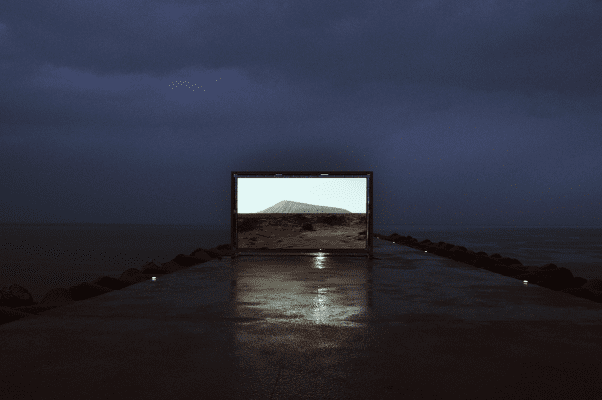
Kimsooja’s refrain among these items is the traditional Korean bottari, a gaily patterned, quilted bed covering, into which personal belongings can be neatly bundled during travel. The bundles are piled to bursting in the tray of the artist’s Bottari Truck, a vehicle which recurs across multiple video works and exhibitions. While the cheerful floral and cartoon-patterned bottari might recall the bobbing swag of runaway Huck Finn, they belie a hard and real history: of those uprooted by war, poverty and oppressive regimes, those seeking a place to safely unbundle their lives. In this sense, bottari are a symbol of itinerancy, necessity and flux. “It brought to my mind the photos of refugees in the Second World War, but it’s also happening now,” says Viola.
To show Kimsooja, in Australia, in the current moment, is not simply a coup but a matter of pressing importance for Eugenio Viola, whose curatorial M.O. is socially and politically proactive. In a country embroiled in debate over off shore detention, acceptance of asylum seekers and ongoing bewilderment over boats and border security, “the issues Kimsooja addresses are urgent and tragic. We know these stories, and Kimsooja provides a symbolic meditation on them, an evocative, metaphorical message.” An immigrant to Australia himself, Viola has thrown himself into the work of articulating and participating in Australia’s unique geopolitical position. “When I arrived here I did not imagine just how strongly connected Australia was with Asia. I want to emphasise the Australasian relationship and Kimsooja is without question the most internationally known Korean artist of her generation.”
As she performs for her videos, the artist enters a kind of meditative state, centred on silent manoeuvres like standing, sitting, impassive begging, and walking. This physicality is “shamanic and charismatic,” says Viola, charging her installations with a presence which draws the viewer in until they feel they are conversing with the work itself: “It’s always an exchange of energy,” says the curator. In this sense Kimsooja’s work is a direct commu- nication, and its material aesthetic a form of writing.
Kimsooja’s meditations on why people need to move and how they manage to do it have been relevant for decades, yet her lyricism and personal scale is more important than ever in a world where statistics and dogmatic commentary can confound the human actuality of events like the Syrian refugees or Manus Island inmate crises. To see hands folding a bottari, or straighten a flag introduces an intimacy by which a viewer can enter Kimsooja’s worlds empathetically, imagining life as traveller, immigrant, stowaway, smuggled person, nomad or cornered airport security interviewee. “I really think art needs to have a social impact in our reality,’ says Viola. “To speak to an audience beyond the circumstance for which it was created. This is the case with Kimsooja.”
Zone of Nowhere
Kimsooja
Perth Institute of Contemporary Arts
17 February – 25 April 2018